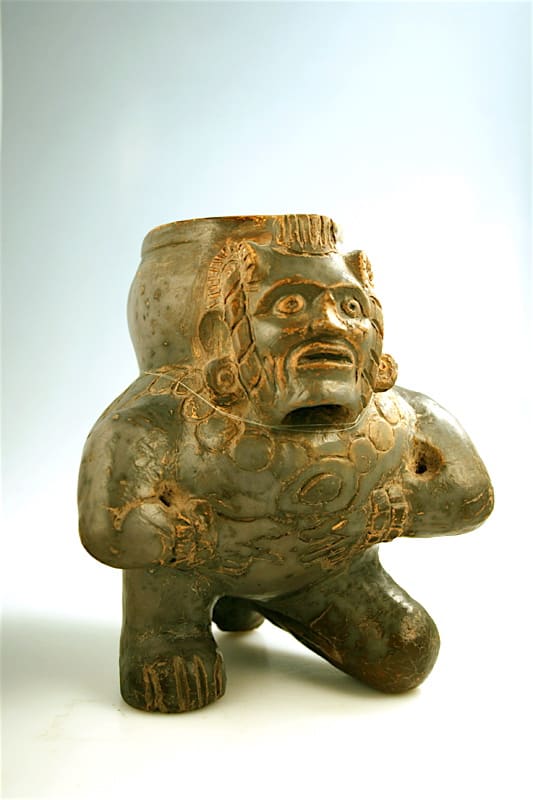Komaland Sculpture of a Head, 12th Century CE - 16th Century CE
Terracotta
6
PF.2039
Komaland is located south of Burkina Faso border in Northern Ghana, in the valleys between Sisili and the Kulpawan rivers. The people of Komaland are mainly farmers, growing corn, millet,...
Komaland is located south of Burkina Faso border in Northern Ghana, in the valleys between Sisili and the Kulpawan rivers. The people of Komaland are mainly farmers, growing corn, millet, onions, tomatoes, and various types of nuts. Until 1985, very little was known about this mysterious culture. During previous twenty years, farmers found terracotta figures in the ground, but knew nothing of their history. However, their cultural and historical value was soon recognized by scholars. In March and April of 1985, a permit was issued to excavate the Komaland site. Since then more information about this unique culture has filtered out.
This particular piece was found with a number of similar pieces creating a circle around a burial mound. This terracotta piece is conical shaped with a blunted end and a face on the side at the top. It was stuck in the ground with the face looking into the center of the circle, at the burial mound. Each piece seems alike at first glance, but all the faces are individual and unique. The Komaland artistic style and its function are very unique among African art and culture. Many questions remain: are these pieces created only to mark a space around the burial mound, are they protective spirits, or representations of dead ancestors? So little is known about the ancient Komaland culture that these question may always remain unanswered. The conical shape of the piece enables it to be stuck in the ground; it is functional, yet its symbolic sexual relation with the earth can be seen as a sign of fertility. So many questions surrounding this small and extremely unique piece just add to its individuality and beauty.
This particular piece was found with a number of similar pieces creating a circle around a burial mound. This terracotta piece is conical shaped with a blunted end and a face on the side at the top. It was stuck in the ground with the face looking into the center of the circle, at the burial mound. Each piece seems alike at first glance, but all the faces are individual and unique. The Komaland artistic style and its function are very unique among African art and culture. Many questions remain: are these pieces created only to mark a space around the burial mound, are they protective spirits, or representations of dead ancestors? So little is known about the ancient Komaland culture that these question may always remain unanswered. The conical shape of the piece enables it to be stuck in the ground; it is functional, yet its symbolic sexual relation with the earth can be seen as a sign of fertility. So many questions surrounding this small and extremely unique piece just add to its individuality and beauty.
